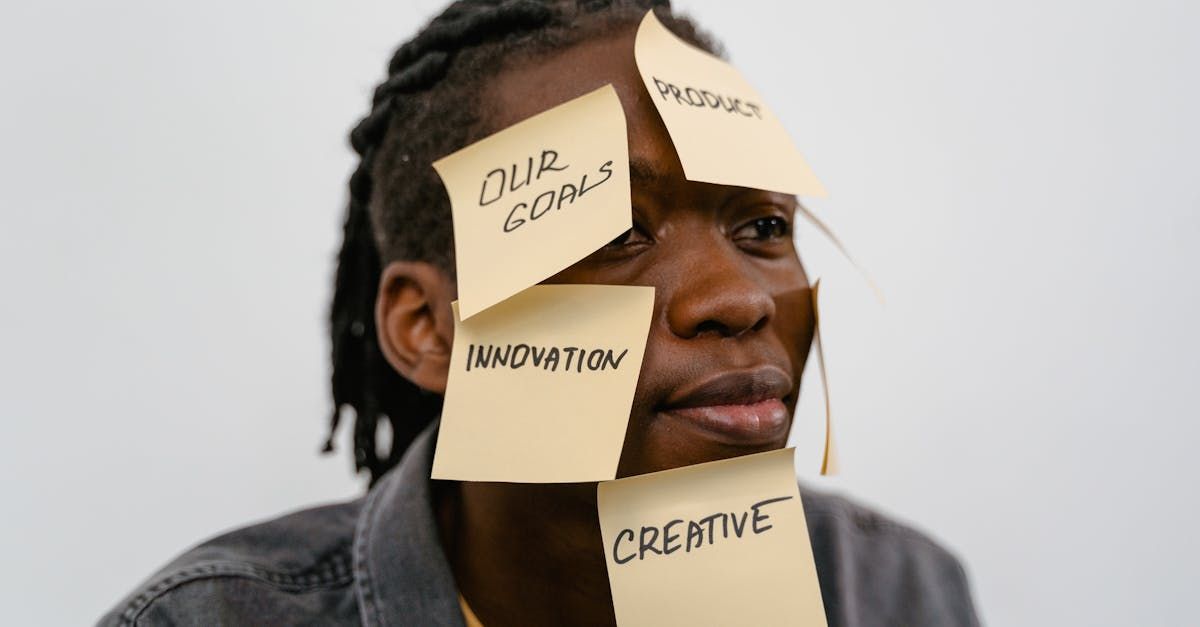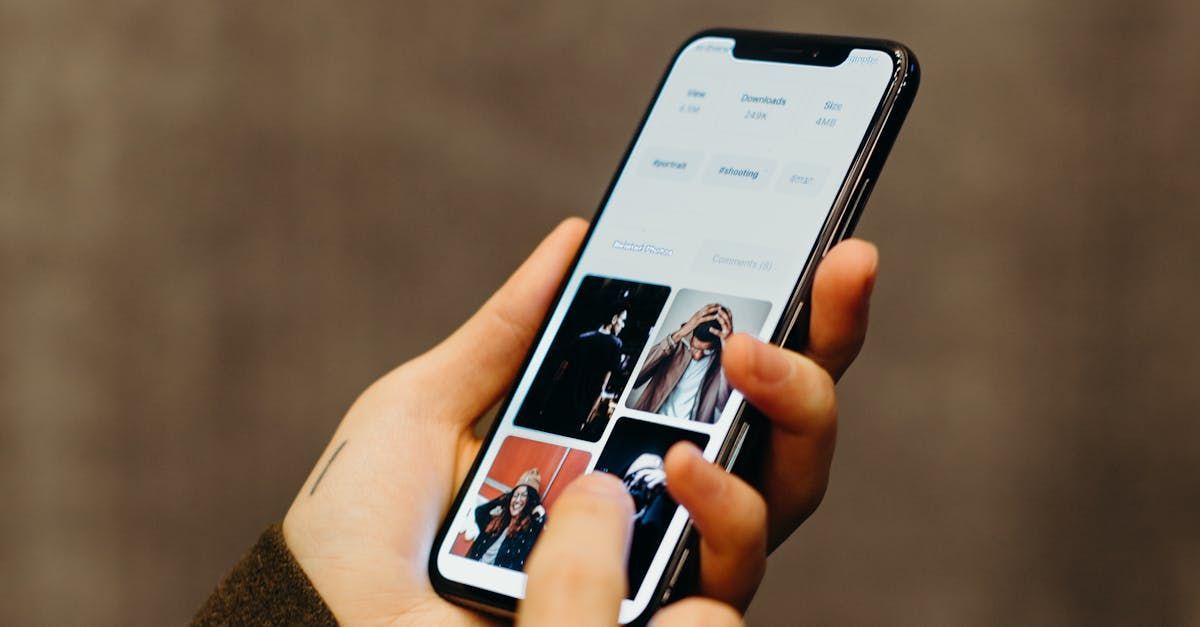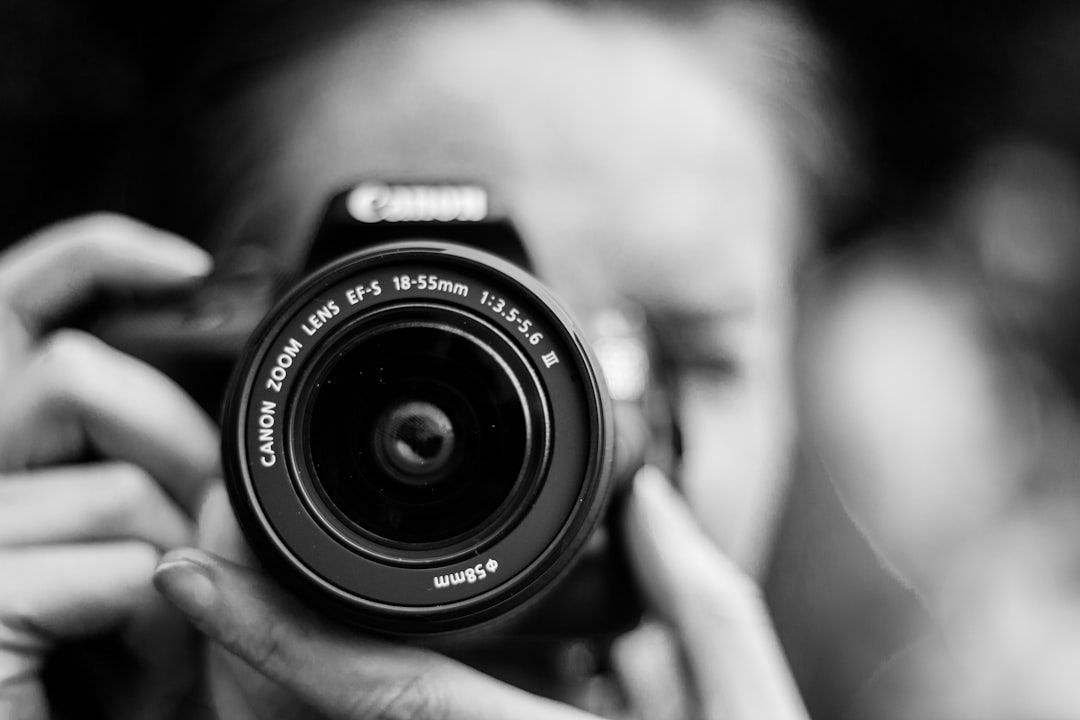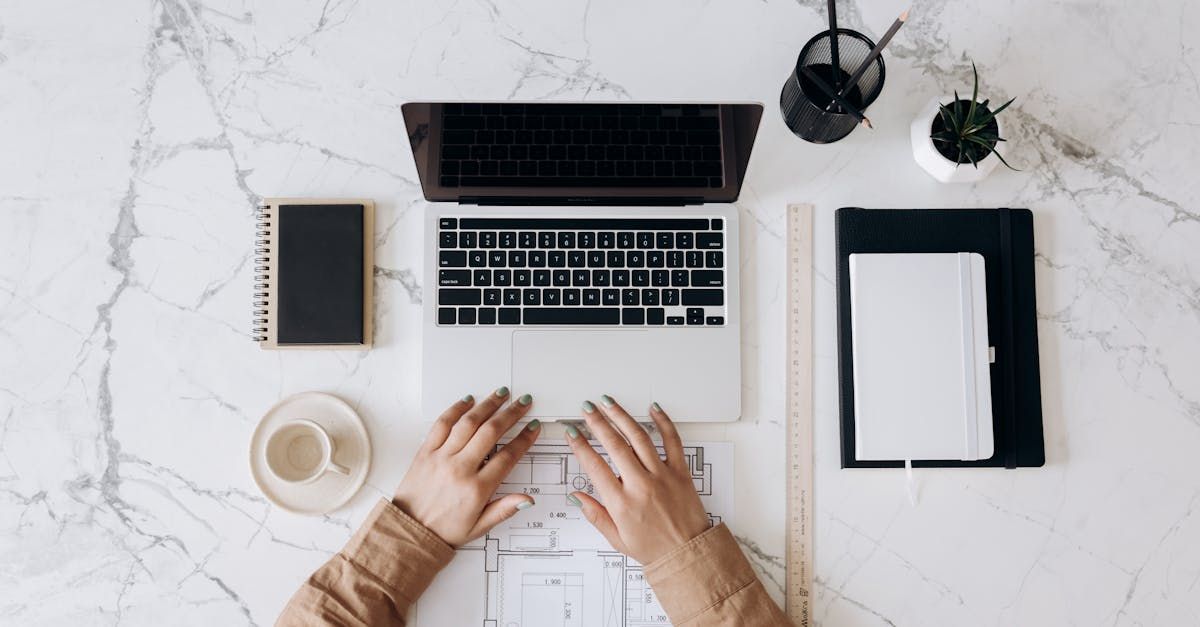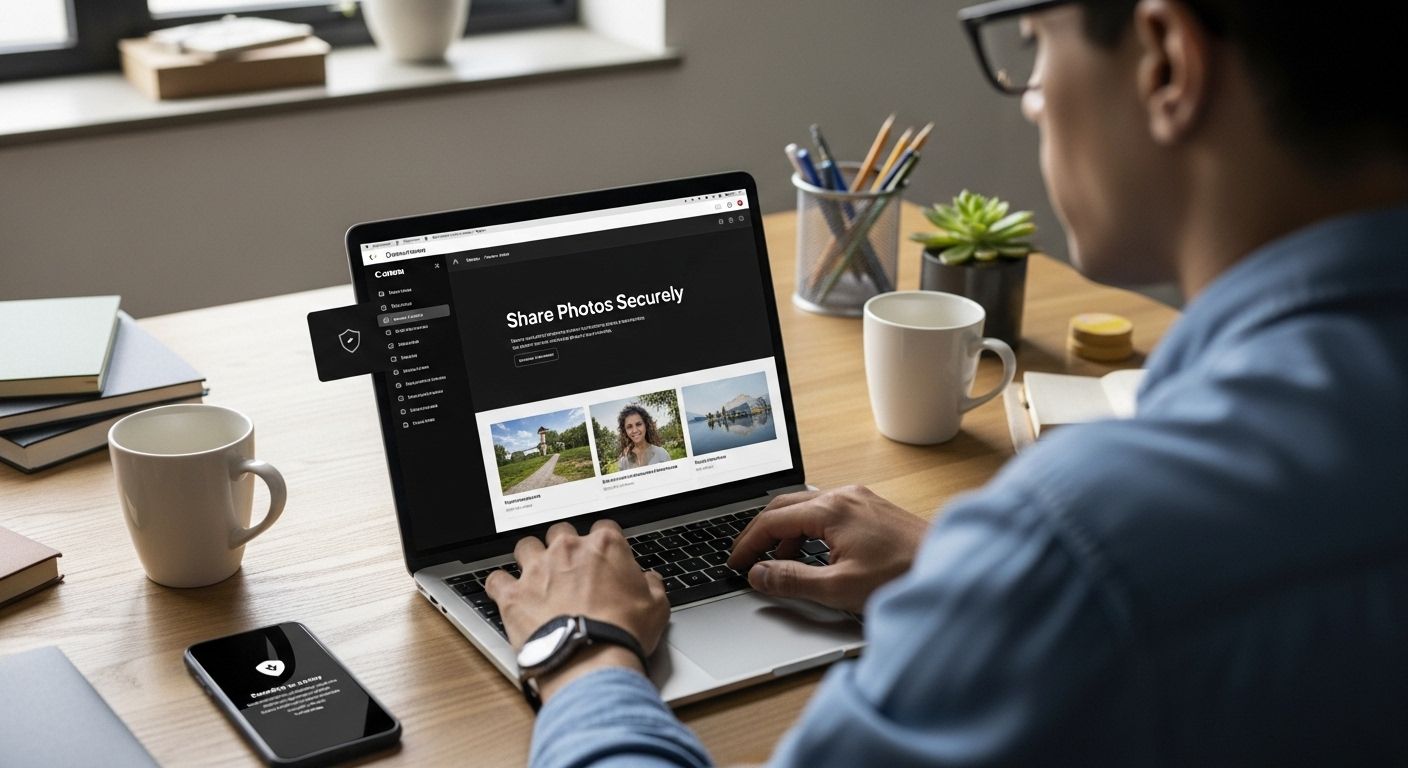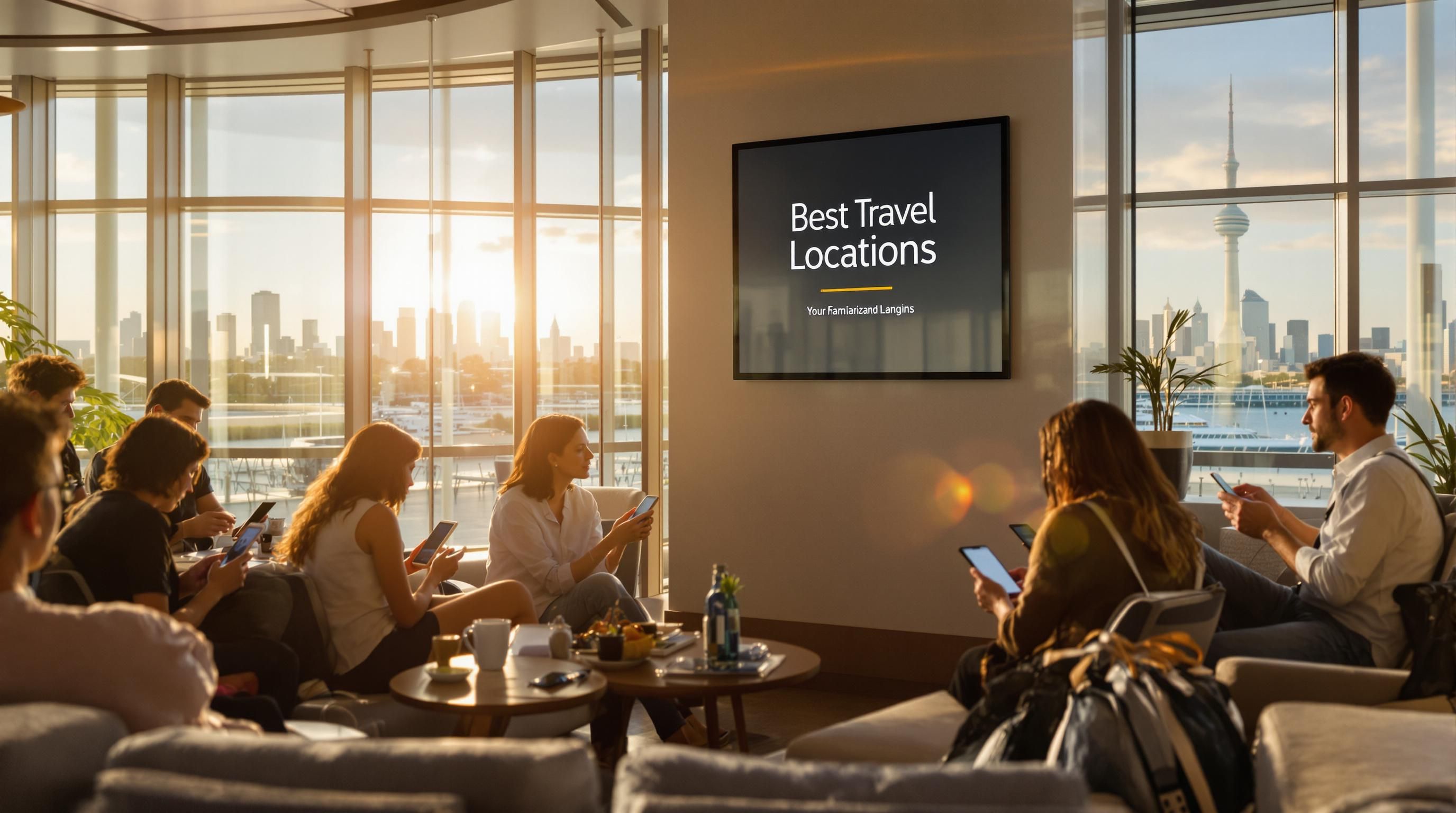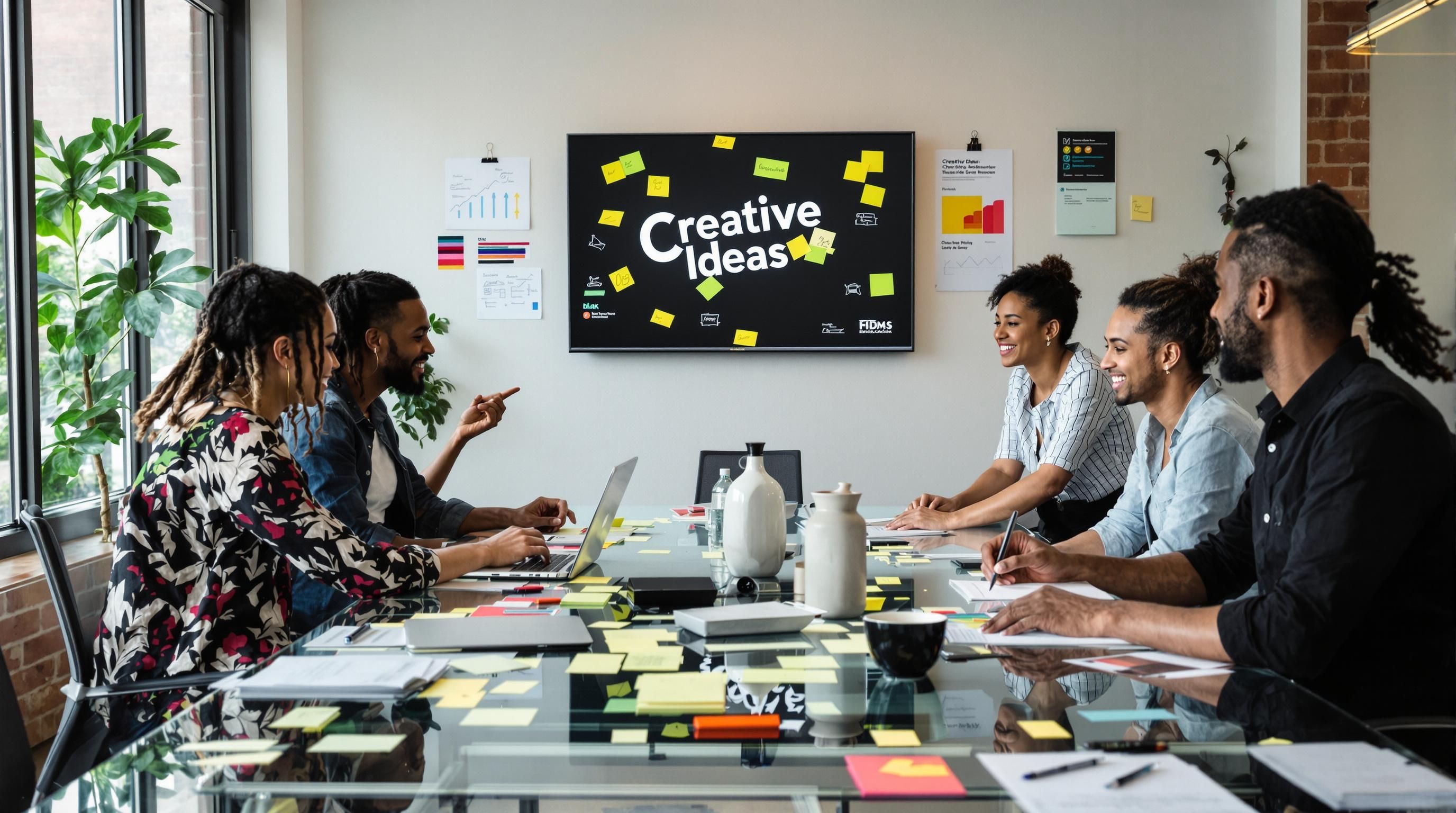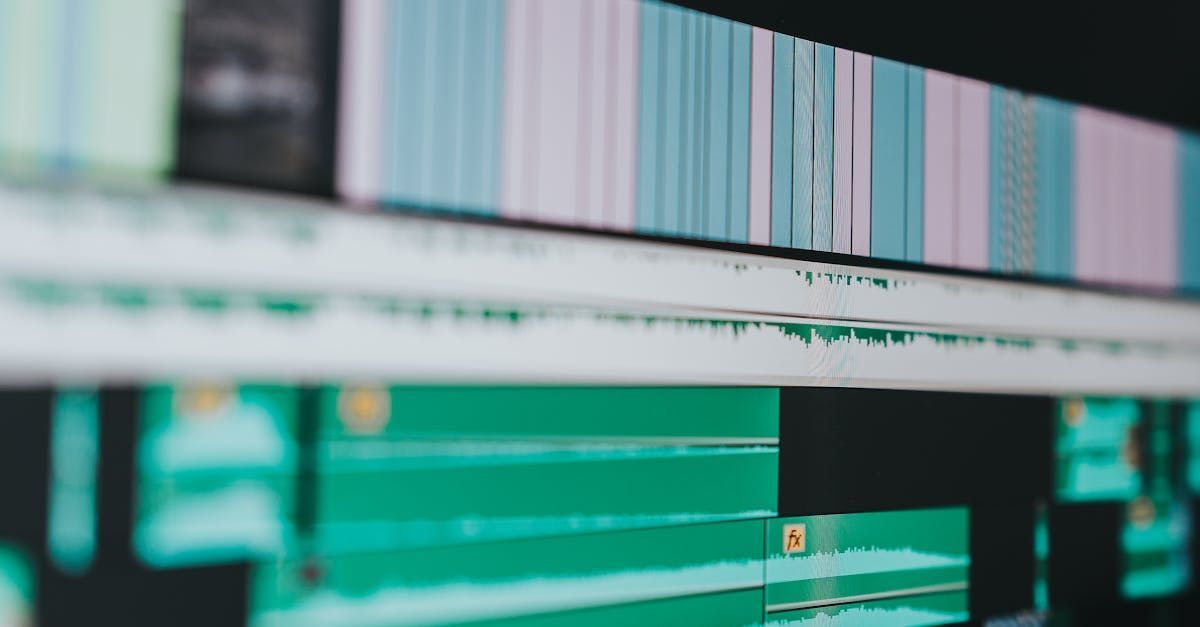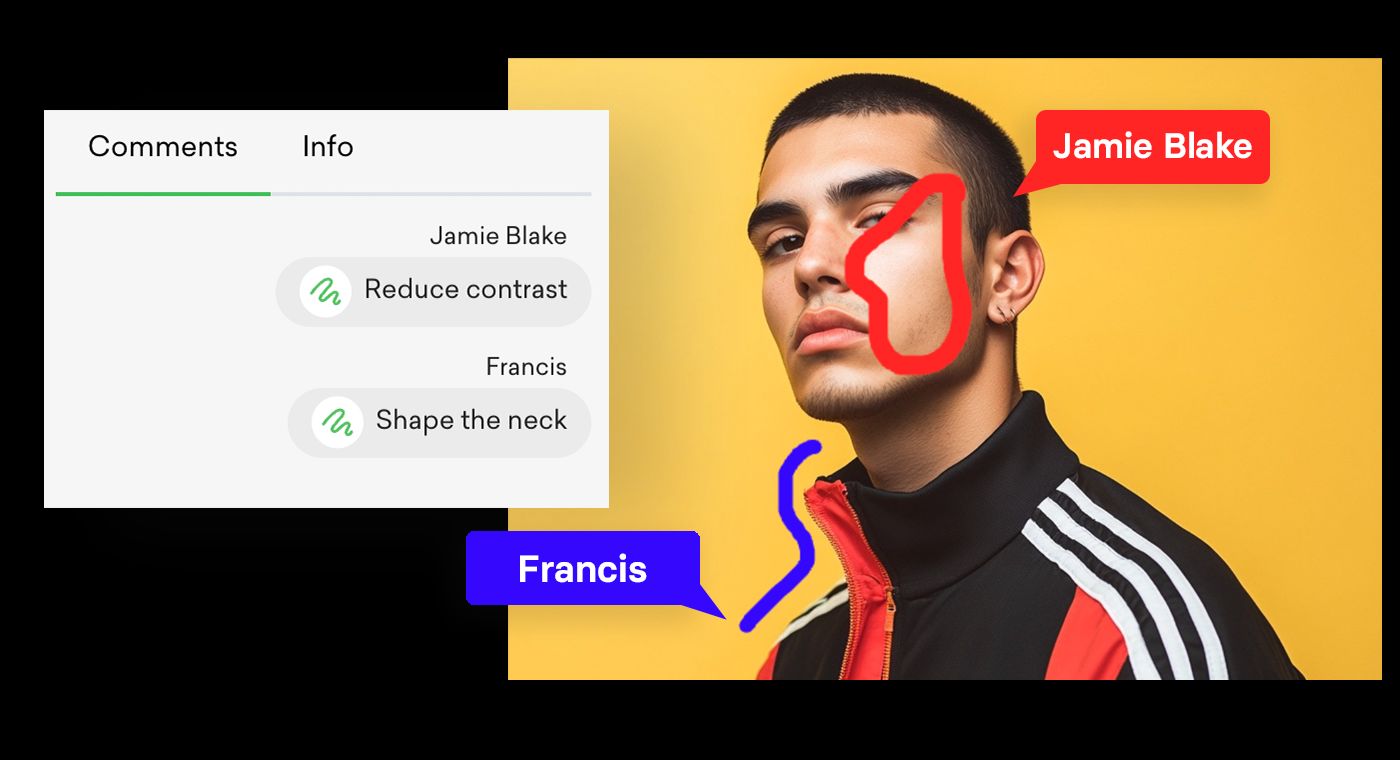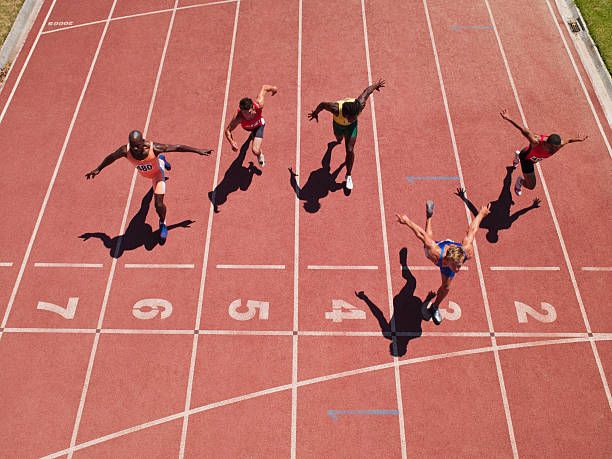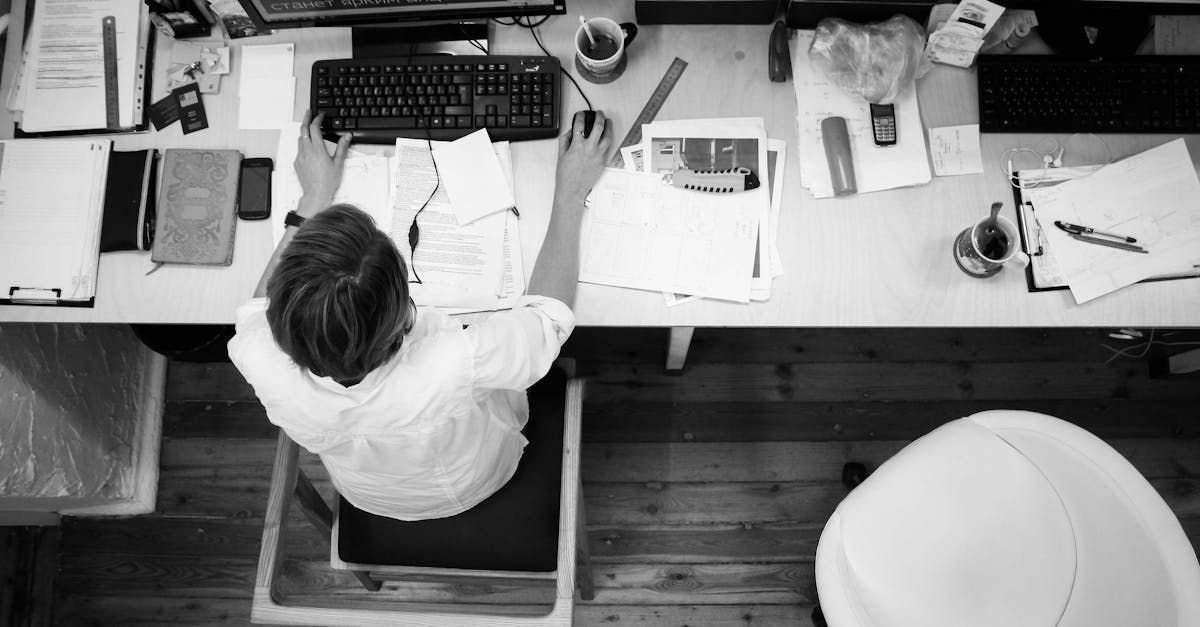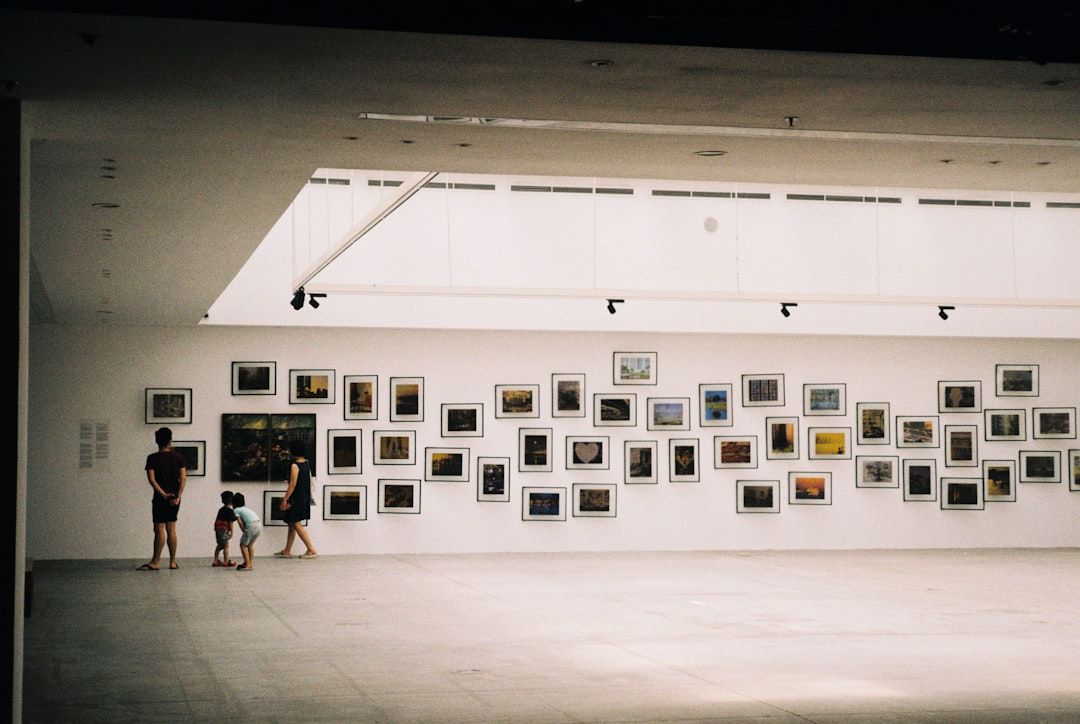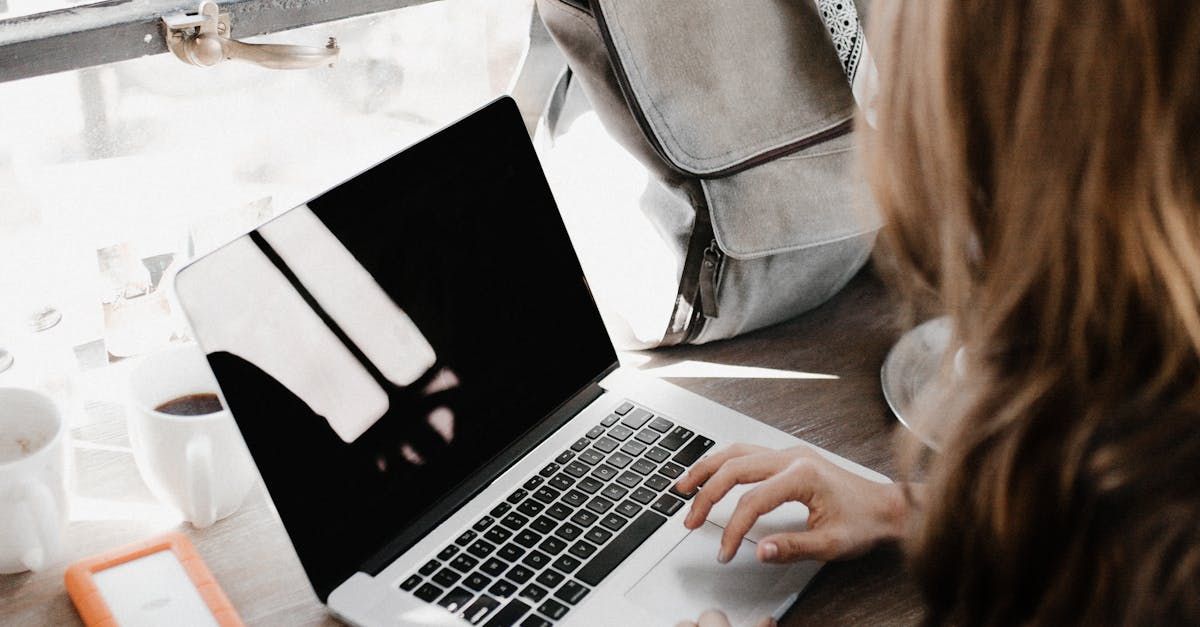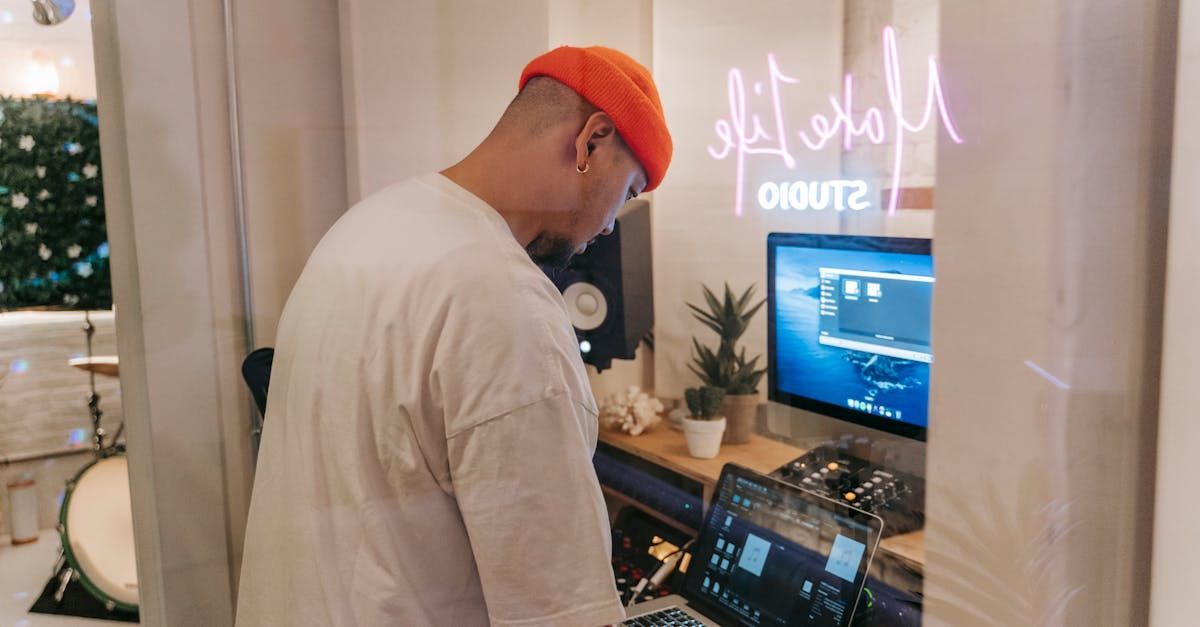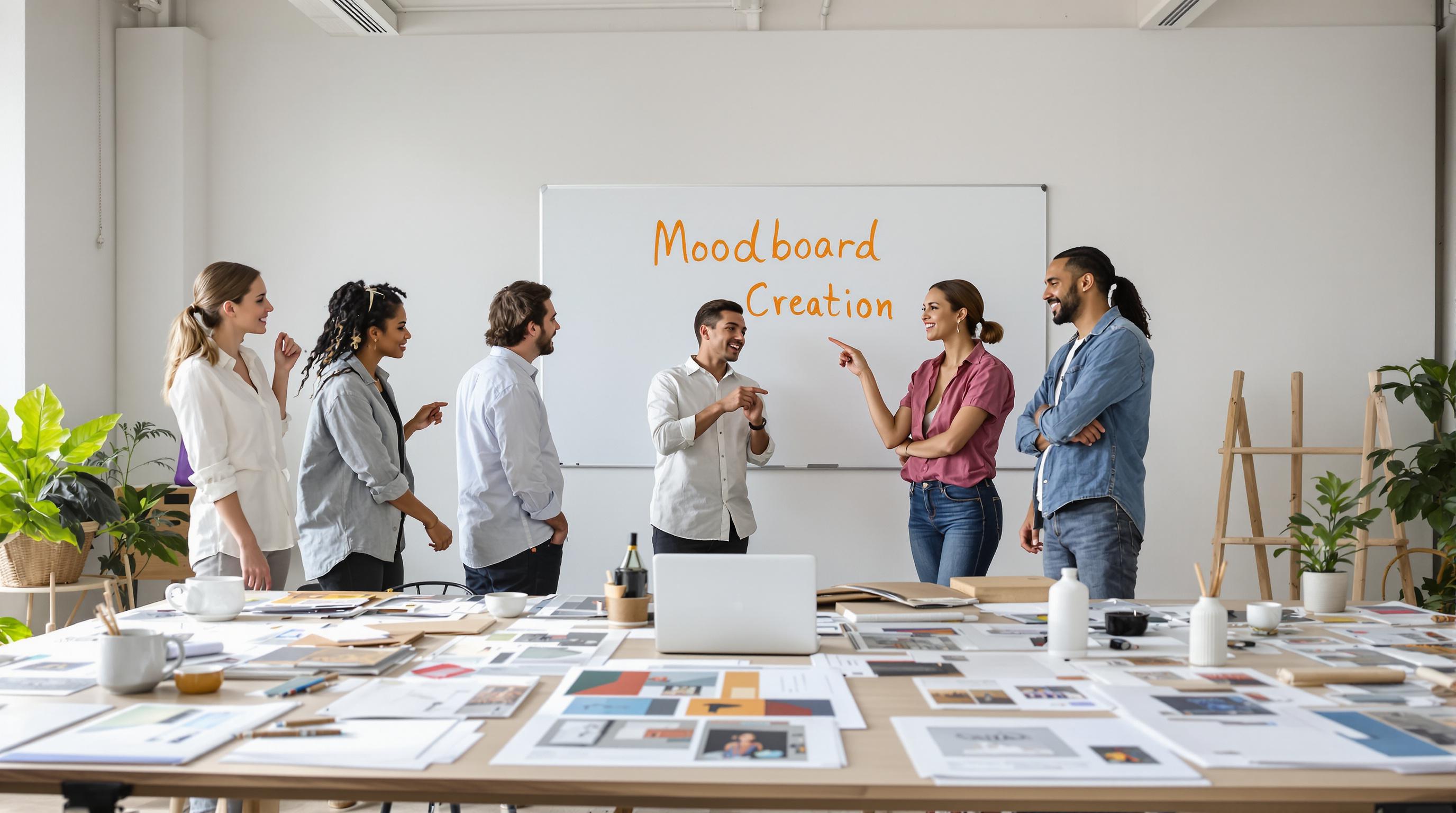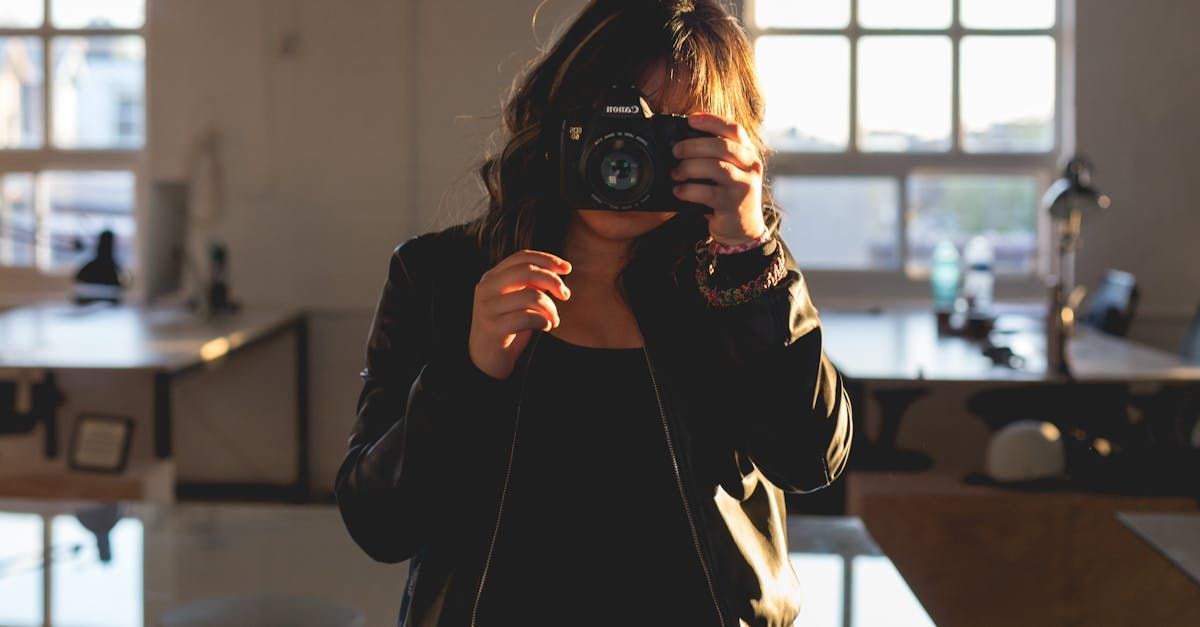Creative block may sound like just another workplace slowdown, but for visual teams it can quietly crush innovation and drain momentum. Now the wild part. About 75 percent of creative professionals face major creative blocks in their career, making it far more common than you might expect. What if these frustrating moments were not roadblocks but stepping stones to breakthrough ideas and team success?
Table of Contents
- Understanding Creative Block In Visual Professions
- Proven Creative Block Solutions For Teams
- Building Workflows That Inspire Creativity
- Tools And Exercises For Lasting Breakthroughs
Quick Summary
| Takeaway | Explanation |
|---|---|
| Understanding Creative Block | Creative block is a significant challenge for visual professionals, resulting from psychological, neurological, and environmental factors, requiring structured recovery approaches. |
| Collaborative Approaches | Implementing structured brainstorming methods like reverse brainstorming and mind mapping can enhance team creativity and reduce blocks by up to 40%. |
| Technology Integration | Utilizing digital tools such as collaboration platforms and AI-powered ideation tools can alleviate creative bottlenecks, fostering seamless communication and idea sharing. |
| Structured Creative Workflows | Balancing structured methodologies with flexibility encourages creative flow, using principles like modular design and iterative feedback loops to support innovation. |
| Neuroplasticity Training | Engaging in targeted mental exercises and cross-disciplinary skill acquisition can rewire neural pathways, enhancing creative resilience and making innovation a trainable skill. |
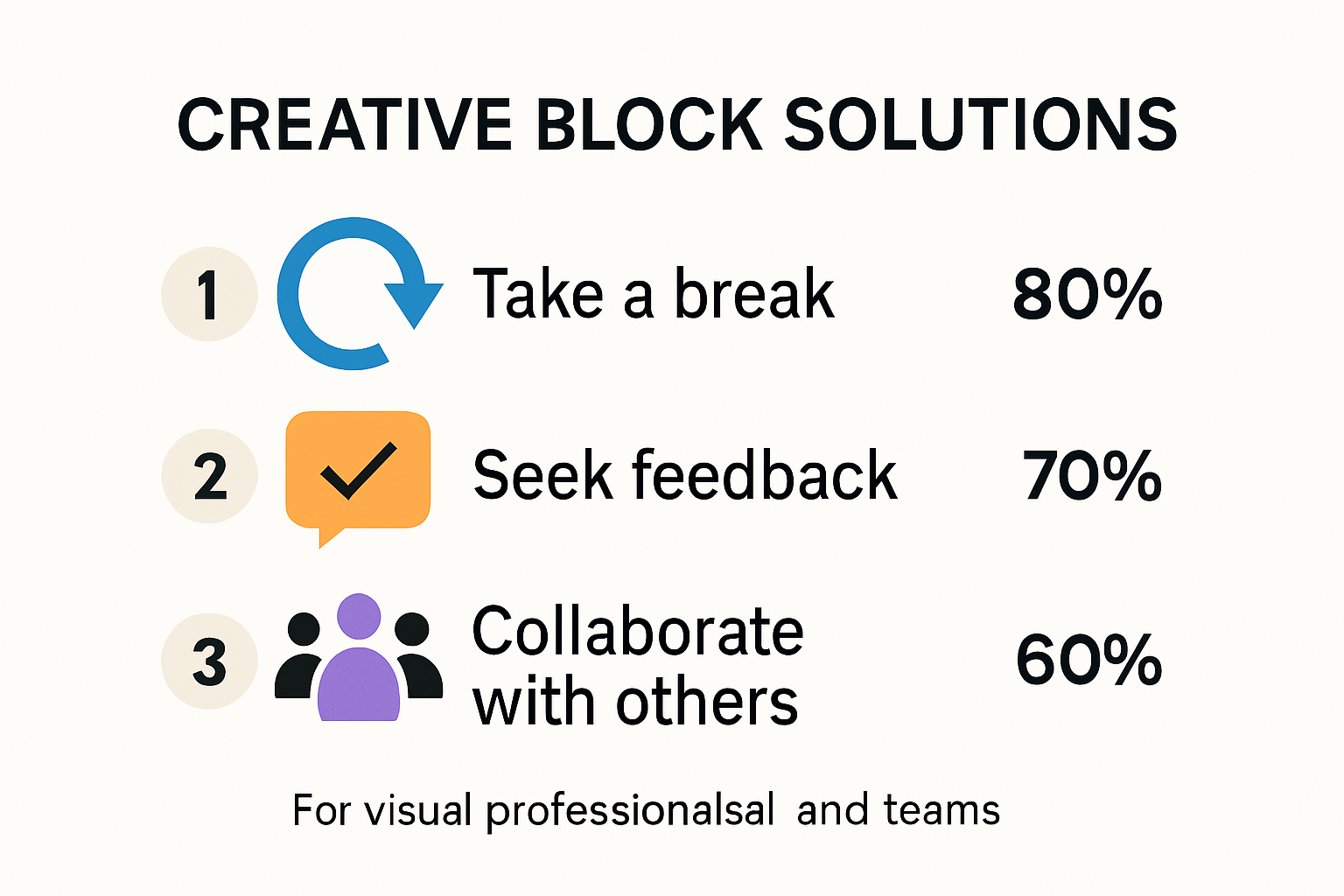
Understanding Creative Block in Visual Professions
Creative block represents a significant challenge for visual professionals, disrupting the natural flow of artistic expression and professional productivity. For photographers, designers, illustrators, and other visual creators, this phenomenon goes beyond simple temporary hesitation and can become a profound barrier to innovation and performance.
The Psychological Landscape of Creative Blockage
Creative block emerges from a complex interplay of psychological and environmental factors. Harvard Business Review research indicates that approximately 75% of creative professionals experience significant creative blocks during their career. These blockages are not merely temporary inconveniences but deep psychological experiences that can trigger profound professional anxiety.
Professionals often describe creative block as an overwhelming sensation of mental paralysis. It manifests through several key symptoms:
- Mental Exhaustion: Feeling mentally drained and unable to generate original ideas
- Motivation Decline: Experiencing a sudden loss of enthusiasm for creative work
- Performance Anxiety: Experiencing heightened self-criticism and fear of inadequate output
To clarify the common symptoms and their impacts, here is a summary table:
Common Symptoms and Effects of Creative Block
| Symptom | Description | Impact on Professionals |
|---|---|---|
| Mental Exhaustion | Feeling drained, lack of new ideas | Reduced creativity and innovation |
| Motivation Decline | Loss of enthusiasm for creative work | Difficulty starting/finishing tasks |
| Performance Anxiety | Self-criticism, fear of inadequate output | Hesitation, reduced output |
Neurological Roots of Creative Impediments
Neuroscience research from Stanford University reveals that creative block is not just a psychological construct but has tangible neurological foundations. The brain’s prefrontal cortex, responsible for creative thinking and problem solving, can become temporarily dysregulated under stress, leading to reduced cognitive flexibility.
Key neurological factors contributing to creative block include:
- Chronic stress disrupting neural pathways associated with creative thinking
- Overactive self-criticism mechanisms inhibiting risk taking and experimentation
- Reduced dopamine levels affecting motivation and imaginative processes
Professional Impact and Recovery Strategies
Creative block can have substantial professional consequences. Visual professionals might experience decreased client satisfaction, reduced portfolio development, and potential income loss. Recognizing and addressing these challenges requires a multifaceted approach that combines psychological awareness, strategic intervention, and professional support systems.
Successful creative professionals develop resilience by implementing structured recovery strategies. These include establishing consistent creative routines, practicing mindfulness techniques, engaging in cross disciplinary inspiration, and creating supportive professional networks that normalize and destigmatize creative challenges.
Ultimately, understanding creative block is not about eliminating it entirely but developing adaptive strategies that transform temporary creative challenges into opportunities for professional growth and personal development.
Proven Creative Block Solutions for Teams
Addressing creative block requires strategic approaches that go beyond individual interventions, particularly in team environments where collaborative creativity is crucial. Professional teams need comprehensive solutions that restore creative momentum and foster an environment of innovative thinking.
To help compare the different solution categories for teams, the following table summarizes their core approaches and benefits:
Comparison of Team Creative Block Solutions
| Solution Category | Core Approach | Key Benefits |
|---|---|---|
| Collaborative Ideation | Structured brainstorming and idea-sharing methods | Boosts creativity, reduces block by 40% |
| Technology Enabled Recovery | Digital tools and AI-powered platforms | Facilitates idea sharing, removes bottlenecks |
| Psychological Safety & Design | Supportive, non-judgmental team environments | Encourages risk-taking, frees creativity |
Collaborative Ideation Techniques
MIT’s Creative Collaboration Research demonstrates that structured brainstorming methods can significantly reduce creative blocks. Teams that implement systematic ideation approaches see up to 40% improvement in creative output.
Effective collaborative techniques include:
- Reverse Brainstorming: Identifying problems by exploring opposite perspectives
- Mind Mapping: Visually connecting ideas through interconnected thought networks
- Cross Disciplinary Workshops: Bringing diverse professional perspectives into creative problem solving
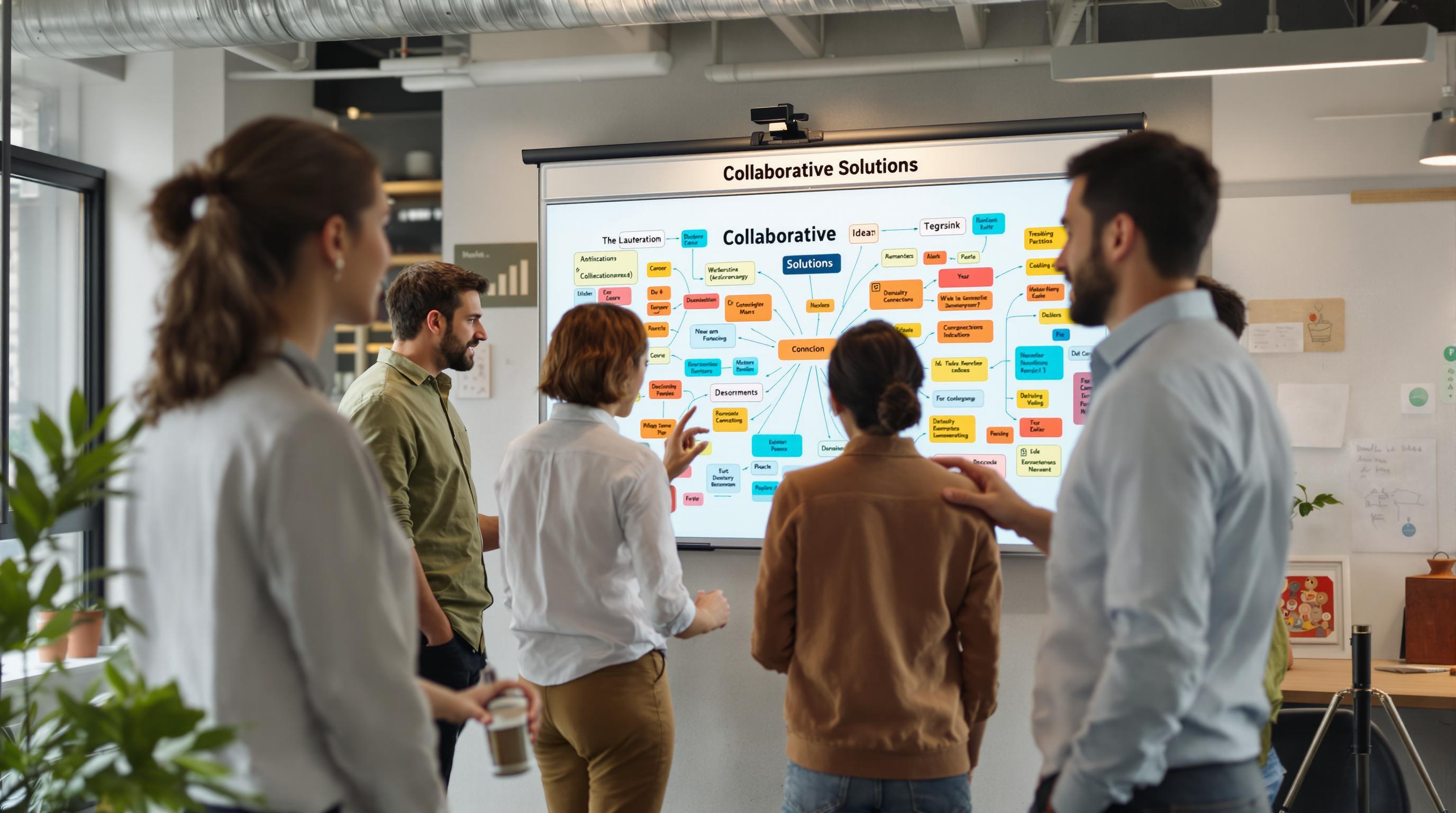
Technology Enabled Creative Recovery
Stanford’s Innovation Lab research reveals that digital tools can dramatically reduce creative bottlenecks. Advanced collaboration platforms provide structured environments that help teams overcome creative obstacles by facilitating seamless communication and idea sharing.
Key technological interventions include:
- Digital collaboration platforms with real time feedback mechanisms
- AI powered ideation tools that generate creative prompts
- Virtual whiteboard systems enabling distributed team creativity
Psychological Safety and Creative Environment Design
Creating a team environment that minimizes creative anxiety is crucial. Research indicates that psychological safety plays a fundamental role in team creativity. Teams that cultivate open communication and reduce judgment create conditions where innovative thinking can flourish.
Strategic environment design involves:
- Establishing clear non judgment zones during brainstorming
- Implementing rotational leadership in creative sessions
- Developing reward systems that recognize creative risk taking
Successful teams understand that creative block is not an individual failure but a collective challenge. By implementing structured approaches that combine technological tools, collaborative techniques, and supportive psychological frameworks, organizations can transform creative obstacles into opportunities for breakthrough innovation.
The most effective creative block solutions recognize that creativity is a dynamic process requiring continuous nurturing, adaptation, and collective support.
Building Workflows That Inspire Creativity
Creative professionals require intentionally designed workflows that nurture innovation and minimize friction in the creative process. Effective workflow design goes beyond mere organizational structure and becomes a strategic approach to maintaining creative momentum and professional inspiration.
Structured Flexibility in Creative Processes
University of California Berkeley research demonstrates that successful creative workflows balance structured methodologies with adaptive flexibility. Rigid processes can stifle creativity, while completely unstructured environments lead to professional disorientation.
Key principles of structured creative workflows include:
- Modular Project Design: Breaking complex creative projects into manageable segments
- Iterative Feedback Loops: Creating continuous assessment and refinement opportunities
- Predictable Unpredictability: Introducing controlled randomness to stimulate creative thinking
Digital Tools and Workflow Optimization
MIT Sloan Management Review reveals that strategic digital integration can dramatically enhance creative productivity. Modern workflow tools are not just about task management but creating environments that support creative cognition.
Essential digital workflow strategies involve:
- Integrated project management platforms
- Real time collaboration technologies
- Automated administrative task management
- Personalized creative tracking systems
Psychological Architecture of Creative Workflows
Designing workflows requires deep understanding of cognitive processes. Creative professionals need environments that support mental transitions, reduce cognitive load, and provide psychological safety for experimentation.
Psychological workflow design considerations include:
- Creating dedicated ideation time and spaces
- Implementing regular creative reset periods
- Developing personalized productivity rhythms
- Establishing clear boundaries between creative and administrative tasks
Successful workflow design recognizes creativity as a complex cognitive process requiring intentional support. By integrating structured methodologies, advanced digital tools, and psychological insights, creative professionals can develop workflows that consistently inspire innovation and maintain professional momentum.
Ultimately, the most effective workflows are those that adapt to individual creative rhythms while providing consistent supportive structures for professional growth and creative expression.
Tools and Exercises for Lasting Breakthroughs
Breaking through creative barriers requires more than passive approaches. Visual professionals need strategic tools and targeted exercises that systematically dismantle creative blockages and reignite innovative thinking. These interventions go beyond temporary solutions, focusing on sustainable creative regeneration.
Cognitive Reframing Techniques
Harvard Creativity Research Lab demonstrates that cognitive reframing can dramatically transform creative perception. By deliberately shifting mental perspectives, professionals can unlock novel problem solving pathways and overcome entrenched creative limitations.
Powerful cognitive reframing exercises include:
- Perspective Shifting: Approaching challenges from radically different viewpoints
- Constraint Introduction: Deliberately limiting resources to spark innovative solutions
- Metaphorical Thinking: Translating creative challenges into alternative conceptual frameworks
Digital Creativity Acceleration Tools
Stanford Design School research reveals that strategic digital tools can systematically enhance creative output. Modern technology provides unprecedented opportunities for creative stimulus and cognitive expansion.
Cutting edge digital creativity tools encompass:
- AI powered ideation platforms
- Virtual reality creative exploration environments
- Generative design software
- Collaborative digital brainstorming interfaces
Neuroplastic Creative Training
Neurological research demonstrates that targeted mental exercises can physically rewire neural pathways, creating more flexible and adaptive creative thinking mechanisms. Creative professionals can intentionally train their brains to become more resilient and innovative.
Key neuroplastic training strategies involve:
- Daily creative micro challenges
- Cross disciplinary skill acquisition
- Meditation and mindfulness practices
- Deliberate exposure to unfamiliar creative domains
Successful creative breakthrough strategies recognize that innovation is a trainable skill. By combining cognitive techniques, advanced technological tools, and systematic neural training, visual professionals can develop robust creative resilience.
The most effective approaches treat creativity not as a mysterious talent but as a systematic skill that can be consistently developed, refined, and expanded through intentional practice and strategic intervention.
Frequently Asked Questions
What are some common causes of creative block in visual teams?
Creative block can arise from a variety of factors including mental exhaustion, loss of motivation, anxiety related to performance, and chronic stress affecting cognitive flexibility.
How can teams effectively overcome creative blocks?
Teams can use collaborative ideation techniques such as reverse brainstorming and mind mapping, integrate technological tools like AI-powered platforms, and create environments that prioritize psychological safety to foster creativity.
What role does technology play in alleviating creative block?
Technology facilitates seamless communication and idea sharing among team members, utilizing digital collaboration tools and AI to generate creative prompts, which can significantly reduce bottlenecks in the creative process.
What are some practical exercises to enhance creativity?
Effective exercises include cognitive reframing techniques, regular participation in cross-disciplinary workshops, and engaging with digital creativity tools that provide innovative prompts and enhance collaborative efforts.
End Creative Block with Seamless Visual Collaboration
Feeling stuck in long email chains or generic file folders just when your team needs to keep creative momentum? The article highlighted how creative block, clunky workflows, and feedback delays can silently drain both your motivation and your output. If your visual team craves a workspace that supports breakthrough ideas, communication, and streamlined delivery, it is time to move beyond basic tools and turn every project into an inspiring process.

Discover how Pikd can transform your creative workflow. Upload visuals, collect instant client feedback, and organize projects in galleries that look as polished as your work. No downloads or signups needed for your clients, only pure, secure sharing and real-time collaboration. Take the next step and bring your creative ideas to life—visit Pikd for Visual Teams and start working smarter today.
